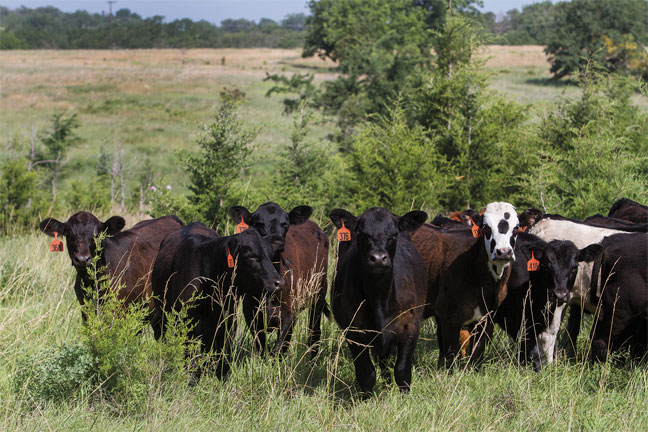 A massive five year, $10 million research project is looking at how the climate variability impacts forage and livestock production. The project involves 46 research scientists and extension specialists from Oklahoma State University, Kansas State University, University of Oklahoma and Tarleton State University, along with the Noble Foundation and two Agricultural Research Service (ARS) locations. One of the principal investigators is Dr. Jean Steiner of the Grazinglands Research Laboratory in Fort Reno, Oklahoma. The Great Plains Grazing Project is all about trying to learn more about the resources in the Southern Plains and how to more efficiently produce beef with those resources.
A massive five year, $10 million research project is looking at how the climate variability impacts forage and livestock production. The project involves 46 research scientists and extension specialists from Oklahoma State University, Kansas State University, University of Oklahoma and Tarleton State University, along with the Noble Foundation and two Agricultural Research Service (ARS) locations. One of the principal investigators is Dr. Jean Steiner of the Grazinglands Research Laboratory in Fort Reno, Oklahoma. The Great Plains Grazing Project is all about trying to learn more about the resources in the Southern Plains and how to more efficiently produce beef with those resources.
“We’re looking at some longterm research at our land grant universities, at our ARS locations and Noble Foundation that are kind of looking at future management practices that might improve the efficiency, the nutrient use efficiency or the animal genetic efficiency,” Steiner said.
A big focus right now within USDA and worldwide are the greenhouse gases that effect the atmospheric composition in the climate. Right now there isn’t a good understanding of the methane emissions from cattle and how you can change those emissions through the animal or diet efficiencies. Steiner said there is a tool that can measure the gas emissions from cattle. The tool is called a “Green Feed System”, which works similar to a breathalyzer. The tool takes an air sample once or twice a day that measures the methane and carbon dioxide emissions. She said the animal emissions can be related back to the quality of the forage. This tool is being used year around on the prairie grasses.
“So, we can look at the combinations of animal factors and plant factors and climate factors that might effect that emissions,” Steiner said.
Methane emissions are often under scrutiny by critics of animal agriculture. Steiner said but this critics overlook the fact that about 40 percent of the land on Earth is in pastureland, rangeland or semi-arid deserts that are unable to sustain any agriculture other than ruminant livestock that are able to eat grasses, scrubs and produce a nutritious food product.
Click here to see more...